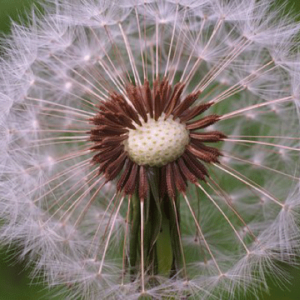 This is the time of year we see a lot of seeds on the move! Much like parents pushing their children out of their house, plants want to spread their seeds, or their genes, as far as possible. Seed dispersal is a technique used by plants to distribute their seeds. Different species of plants have some clever ways of transporting their seeds. Watch out for these whenever you see seeds on the move.
This is the time of year we see a lot of seeds on the move! Much like parents pushing their children out of their house, plants want to spread their seeds, or their genes, as far as possible. Seed dispersal is a technique used by plants to distribute their seeds. Different species of plants have some clever ways of transporting their seeds. Watch out for these whenever you see seeds on the move.
Perhaps the most common method of seed dispersal is wind. Some plants we all know and love use wind to disperse their seeds. Thistle, maples and dandelion are some common species that use this method. Thistle and dandelion seeds are attached to a fluffy parachute that carries the plant far away. Maple seeds have little wings that have been nicknamed ‘helicopters,’ however the botanical term for them is a schizocarp. The seeds fly through the air using their ‘wings’ in hopes of spreading far from the parent tree.
Other species rely on animal transport to disperse their seeds. There are two types of animal transport, active and passive. In active transport, some plants we enjoy eating, such as blueberries and strawberries, trick us into eating their seeds by wrapping them with sweet fleshy fruits. We consume the seeds along with the fruit, and then our bodies digest the fruit, removing the protective layer on the seed called the seed coat. Once the seed coat is removed, the seed can absorb valuable nutrients and start to grow! Additionally, the seed may travel far from the parent plant depending on the amount of time digestion takes.
Another method of animal transport is called passive transport. Some plants like to slyly attach their seeds to our pant legs or to the fur of animals. A species found locally that is guilty of this is called hound’s tongue. When you walk by a hound’s tongue plant, the seed has small hooked fibers, called a burr (similar to Velcro) that attaches to our clothes or to animal fur. Once the human or animal has walked around, the burr will fall off and be dispersed in a new area. One thing to note about hound’s tongue is that it is an invasive species. An invasive species is a species not native to the area that can take up valuable habitat from native species. If you find any hound’s tongue attached to your pants or to your dog, make sure to throw the burrs in the trash to stop the spread of this species.
Water is another way plants transport their seeds. Plants such as water lilies who grow in water will typically use this method of dispersal. Their seeds have the ability to float. The water will carry the seed until it reaches an area where it can be planted.
The last, and most exciting method that seeds are dispersed by is through a method called explosive dispersal. Some species of plants, such as lupine or jewelweed, eject their seeds multiple feet away using gravity. When the seed pod is touched or ripens, the two halves of the seed pod holding the seeds peel back and eject the seeds. This is one of the more entertaining methods of seed dispersal!
Since plants cannot move, they have to find creative ways of moving their species to new growing locations. As the summer comes to an end, try to catch a glimpse of some of these creative types of seeds on the move!
Rachel Holland is a naturalist intern at Walking Mountains Science Center in Avon, CO. She was previously an intern at the Betty Ford Alpine Gardens in Vail, CO, which is where she learned so much about plants! Besides plants, Rachel also enjoys horseback riding and hanging out with her guinea pigs.









